Hi Rich,
Given our current muddle in
trying to sort out what rugdom did/does/should mean by Yuruk, it seems
useful to try to reconstruct a bit of the genealogy of the discourse on
Yuruk rugs.
While Mumford gets it right that the Yuruk are
specifically
Turkic “mountaineers”, his description of their rugs
certainly sounds like those we associate with their Kurdish neighbors,
down to their brown wool warps, “fierce-looking” knotted braids, “peculiar
softness” and lack of symmetry.
G. Griffen Lewis (1913 ) also
lists Yuruk rugs separately from Kurdish (“Mosul”) ones. He cites their
braided warp ends, brown wool warp and, like Mumford, notes that the sides
are often overcast with colored yarns. As to palette, Lewis says that
“brilliant dark colors” prevail, particularly browns and blues. For Mosul
rugs (produced by Kurds around Lake Van) the description is very similar
with a listing of “usually dark, rich blues, yellows, greens, reds and
browns” as the predominant colors.
Here’s the Yuruk from
Lewis:
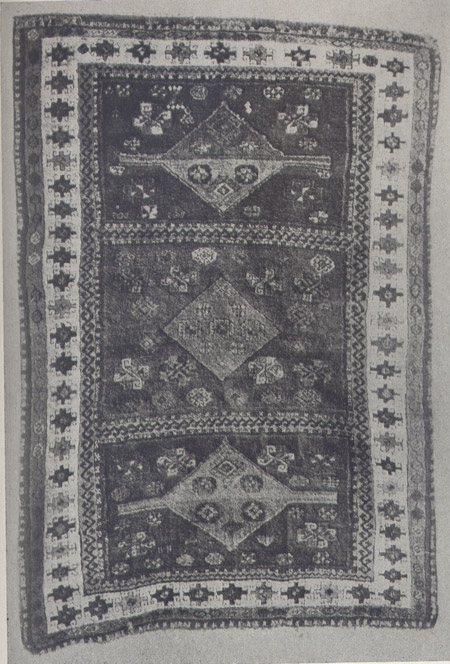
Hawley (1913),
describes Yuruks as “tribes of Turkoman descent.” He calls their rugs
“entirely distinct” from those woven by any other group in Asia Minor. He
likens them to Kazaks as “in them will be recognized the same long nap,
the same massing of color, the same profusion of latch-hooks, and other
simple designs.” He also mentions that they have adopted some forms from
“the Kurdish tribes to the east.” He may here be referring to Yuruk pile
weavers in central Anatolia. When it comes to describing the rugs woven by
the “Kurds of Asiatic Turkey”, he writes that “brown is very largely used.
There are also dark reds and blues brightened by dashes of white and
yellow. Their “long nap and long shaggy fringe…give these pieces a
semi-barbaric appearance.”
While all three authors clearly believe
there is a recognizable distinction between Turkic Yuruk and Anatolian
Kurdish rugs, it is difficult to get from their descriptions of what those
distinctions consist. In addition, there is no indication of the
geographical location of the Yuruk groups they describe. It is unclear if
any of these Yuruk pile rugs were being produced in eastern Anatolia and
not further west by the Yuncu, Yaghcibedir, or other western Anatolian
Yuruk groups.
Iten-Maritz’s description of the Yuruk
contributes an almost comic note to the confusion by stating “their
carpets do have one feature in common-they all bear the mark of
independence.” This manifests itself in “a rather imprecise, highly
original design,” While Iten-Maritz indicates that Yuruk rugs take on the
character of the locations in which they graze their sheep or reside
during the winter, all of the hyphenated Yuruk types he illustrates are in
either western or central Anatolia. The one possibly useful indicator for
trying to differentiate the pile weavings of Yuruks in eastern Anatolia is
his statement that “the stepped mihrab is common to Yuruks of every
region.” (note the stepped mihrab in picture # 5 in the salon). He
includes one eastern Anatolian rug of this type.
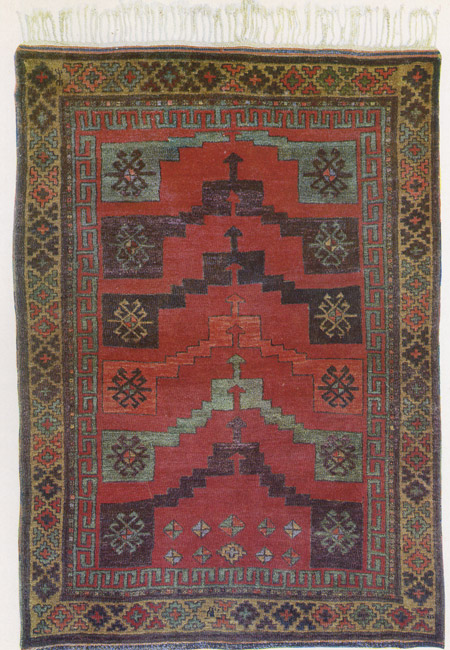
Here's a scene
from Iten-Maritz of Yuruks washing rugs. I can't tell if there are any
pile rugs among them.
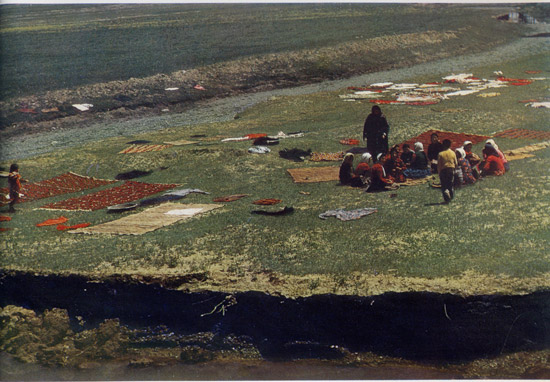
Finally there is
Jacobsen (1962) who identifies Yuruk rugs as coming from eastern Turkey
adjacent to Persia. He states that after 1915, Yuruks were only being
produced “in scatter sizes.” He includes a black and white photo of a
“typical non-prayer Yuruk” whose field is a “slight magenta-like red. The
designs are ivory, green salmon and plum.” Writing about the confusion of
Yuruk with Kurdish rugs in 1988, Eagleton says that "dealers in Turkey
have no problem separating the weavings of one group from the other."
Unfortunately, he gives us no guidance on how they make the
distinction.
Here’s Jacobsen’s Yuruk:
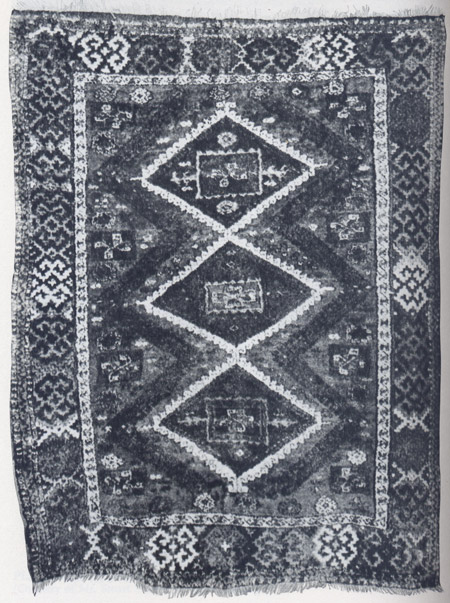
And, for a contemporary
touch, here’s a rug listed as Yuruk that was up for auction yesterday in
London:
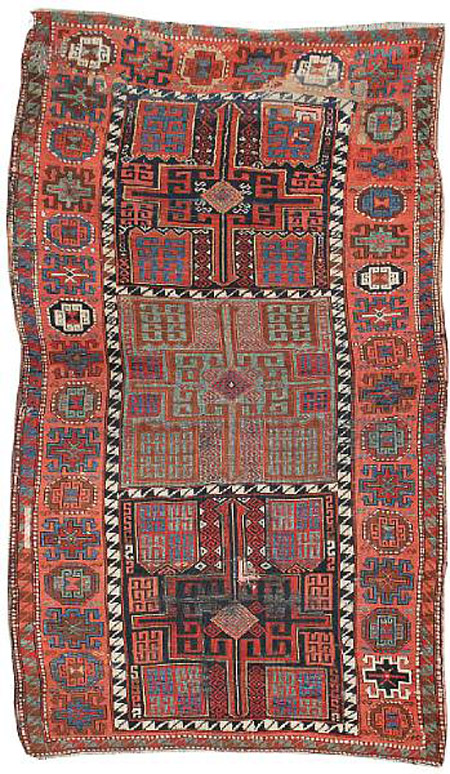
Joel Greifinger